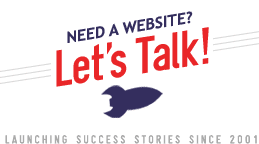Blog
Best Practices for Livestreaming
Gus Wagner - Comment (0)In preparation for a presentation at #MRJBC with the Missouri Realtors, Gus Wagner livestreamed this Periscope video covering best practices for livestreaming and changes coming down the road in the near future.Be sure to connect with us here on Periscope for more livestreaming and interactive goodness!Read more...Changing What You See in Your LinkedIn Newsfeed
Gus Wagner - Comment (0)The LinkedIn newsfeed can be rather confusing and seem out of date. There is an almost hidden way to control what you see and Gus Wagner will show you in this screencast video.Read more...Creating Rockstar Excitement in Your Audiences
Gus Wagner - Comment (0)You probably think you, or your business, organization, or nonprofit are a rockstar at what you do. That’s cool. Let’s talk about how to get your audience to believe that you are as well.Gus Wagner of The Rocket Group covers this topic in a Periscope video.Read more...Creating First Impressions on Twitter
Gus Wagner - Comment (0)When you encounter new competitors, peers, or unknowns on Twitter, one of the first thing to do is to check out their list of followers to see who they are attracting. Too often, a bad first impression is made because their follower list is full of junk and spammers. This is an obvious sign they bought their followers and are tweeting into an empty room. Gus Wagner discusses the topic at length in this video and blog.
Need help figuring out the world of followers and fans and subscribers in social media? Give us a shout anytime and let’s talk about what you’d like to achieve in your audiences!Read more...

